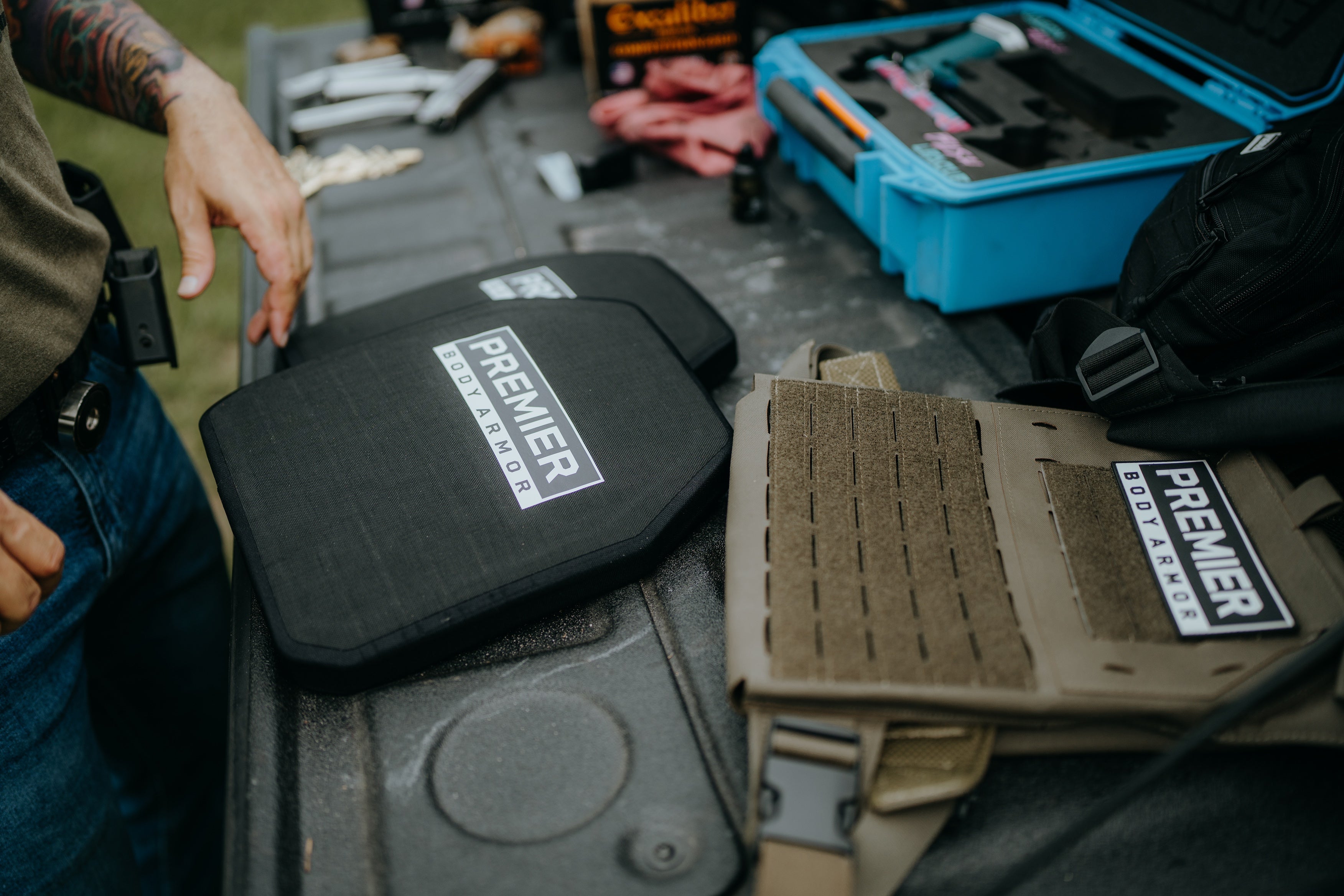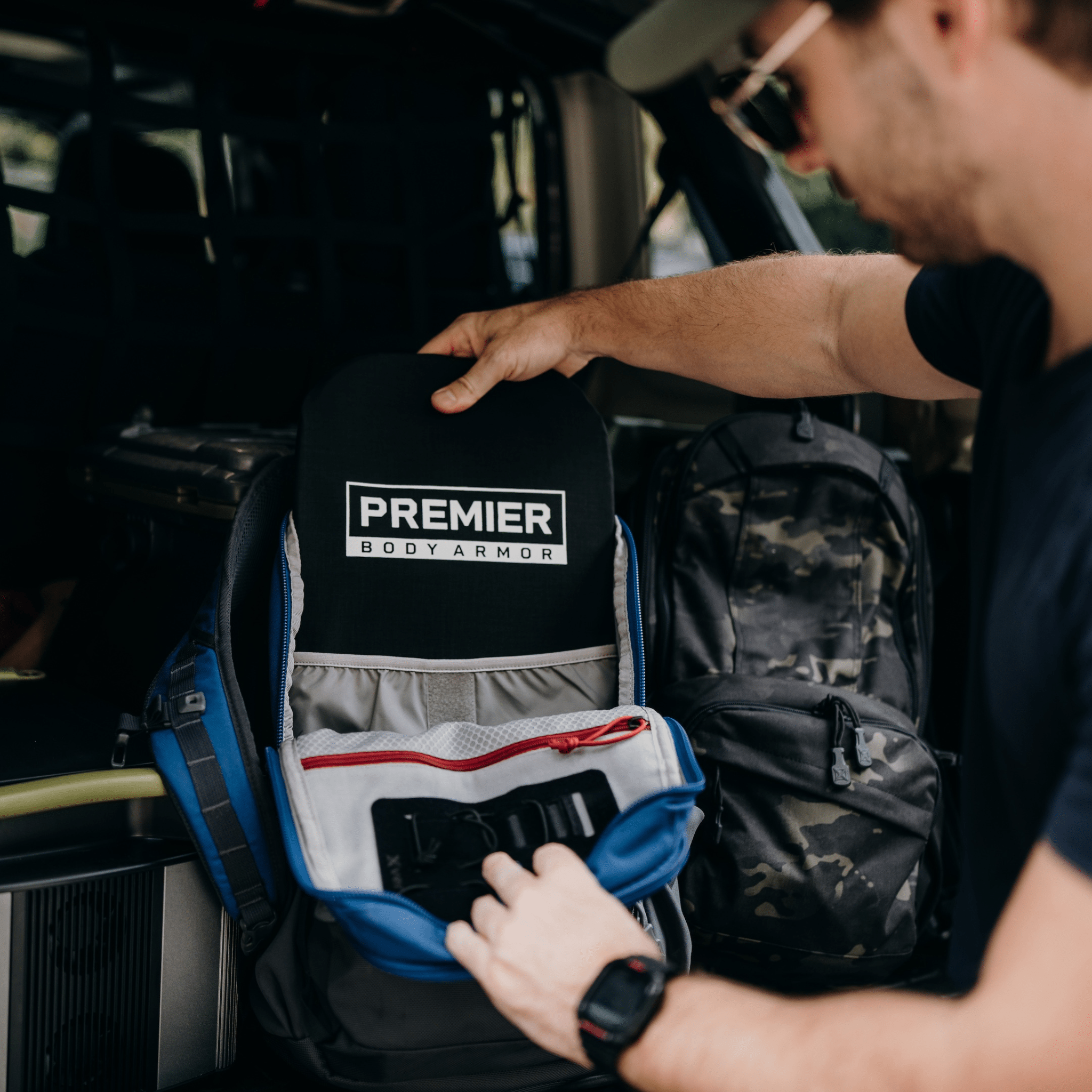A Guide to the Best Food For Your Bug Out Bag
In a world where uncertainties loom, preparation becomes our greatest ally. When bugging out, the food you choose should strike a balance between providing needed calories for energy and being easy to pack and carry.
Essential Bug Out Bag Food Items
The bug out bag of food items you decide to include in your system could mean life or death in the most dire of situations.
Ultimately, the bug out bag food you want is not always what you might have in your home pantry. Like all facets of emergency preparedness, It takes an element of strategic thinking and foresight to get the best setup. Let’s run through it.
Emergency Food Items to Pack in Your Family’s Go Bag
When setting up your family's go bag, it might be a good idea to prioritize non-perishable options. These bug out bag food items not only withstand the test of time but also provide the sustenance needed for optimal energy levels.
Non-Perishable Food
- Canned Goods: Include canned beans, vegetables, and fruits. They are convenient, have a long shelf life, and provide essential nutrients.
- Nutrient-Rich Snacks: Opt for energy bars, trail mix, and dried fruits. These snacks are lightweight, easy to pack, and offer a quick energy boost.
- Instant Oatmeal: A versatile choice, instant oatmeal requires minimal preparation and provides sustained energy.
- Nuts and Seeds: Packed with protein and healthy fats, nuts and seeds are compact and nutritious.
- Jerky: High-protein jerky, whether beef or alternative options, is an excellent source of energy and doesn't require refrigeration.
Essential Bug Out Bag Food Items
Besides non-perishable bug out bag food items, dehydrated and freeze-dried options make an excellent survival food choice.
Dehydrated meals are lightweight and compact; simple to prepare and offer a variety of flavors to keep your meals diverse. Similarly, dried fruits are an overall fantastic survival food, as are instant soup packets.
For additional long shelf life food options, consider rice and pasta, powdered milk (a space-efficient alternative to traditional dairy), and also honey (a natural sweetener with an indefinite shelf life).
Overall, all these foods are extremely light and easy to carry but maintain most of their nutritional value, which is of utmost importance in survival scenarios.
Best Types of Food to Pack in Your Bug Out Bag
Curating the best bug out bag food demands thoughtful consideration.
For starters, though, choose non-perishable staples, nutrient-rich snacks, and high-protein survival foods. This includes dehydrated meals for variety, freeze-dried fruits for nutrition, and instant soup packets for quick comfort.
Also, ensure your food has longevity by deciding on essentials like grains, powdered milk, and honey for the natural sweetness.
By opting for these bug out bag foods, you’ll set yourself and your family up for any possible danger.
Food Packing Strategies for Bug Out Bags
In the world of survival, the meticulous curation of a bug out bag extends to the aspect of food storage. There are a few tips for packing an emergency food kit.
Tips for Packing an Emergency Food Kit
A mylar bag for food storage is a type of polyester film known for its high tensile strength, chemical stability, and insulating properties. These bags are commonly employed in emergency food storage to create a protective barrier against external elements, including light, moisture, and oxygen.
By using the best mylar bags for food storage, perishable items are shielded from environmental factors, helping to extend their shelf life.
The reflective nature of mylar also aids in temperature regulation, further contributing to the preservation of the stored food's quality and nutritional content.
In short, mylar bag food storage is a great method for enhancing longevity of your emergency food supplies.
Choosing Food With Packing in Mind
As mentioned, when selecting bug out bag food, factors such as caloric density, size, nutritional and energy value, and shelf-life take precedence.
However, this methodology is primarily useful for your bug out bag. If you want to take the extra step to achieve a sense of all-around safety, then you should consider decking out your at-home prepper pantry. Many of the same foods and tips apply but if you don’t know where to start . . . start simply: Just get 10 cans of food and start building up your supply from there.
The Importance of Choosing the Right Bug Out Bag Food
This all-encompassing approach optimizes packing space while ensuring sustenance during emergencies. The right choices, with these tips in mind, are crucial for an efficiently packed emergency food supply.
Detailed Food Selection
Emergency Food Supply 101: What to Pack
What food has the longest shelf life? For that, decide on long shelf foods like dehydrated fruits, freeze-dried survival food, and vacuum-sealed snacks. These foods not only boast extended shelf lives but also retain essential nutrients.
Food Preparation and Usage
With a focus on convenience, consider ready-to-eat snacks and meals that require minimal preparation.
How to Prepare and Consume Bug Out Bag Food
The longevity of emergency food buckets make it an excellent choice. These buckets, often packed with a variety of freeze-dried survival food, provide a hassle-free solution for your emergency food needs.
The lightweight nature and extended shelf life of freeze-dried options make them ideal for bug out situations. Simply add water, and you have a quick, nutritious meal ready to go.
Will I Need to Cook When Bugging Out?
No, cooking may not be necessary when bugging out. It might be wise to consider freeze-dried survival food and emergency food buckets that require minimal preparation. This ensures you never go hungry even without a space to cook.
However, having the means to cook is still advantageous. If you can do it in survival situations do so – but it is always a good idea to have reliable back-ups in case things go south.
Food Management and Rotation
Let’s take a look at some of the best tips about how to manage your food supply.
Maintaining Freshness and Nutrition: Rotate Foods in Your Bug Out Bag
One important aspect of managing your bug out bag food supply is to ensure the freshness and nutritional integrity of the items you've chosen. When it comes to emergency preparedness, particularly for a 1 year food supply, rotation is key.
Rotating your bug out bag food items is a simple yet effective strategy to prevent items from reaching their expiration dates. For a year supply of food, regularly check and replace any items that are approaching their shelf life to guarantee that you always have an edible emergency food supply.
One way to do this consistently would be to choose a date, like daylight savings or your birthday, and replace items at that time.
For a 1 year emergency food supply, the rotation process becomes even more crucial. Consider creating a system where you organize your bug out bag foods by expiration date, placing those with the earliest dates towards the top for easy accessibility.
This method ensures that you use items in a first-in, first-out fashion, reducing the risk of any supplies going unused and expiring.
The Ideal Bug Out Bag Food and Why High-Calorie Foods Matter
Load up your bug out bag with high-calorie, survival-friendly options that pack a punch. Think energy-dense nuts, trail mix, and hearty granola bars for sustained vigor.
In survival situations, calories take on a different meaning than in your everyday life. When you’re inevitably exerting a lot of energy just to survive, calories dense foods become strictly necessary.
Customizing Your Bug Out Bag Food
When it comes to preparing for unexpected situations, having a well-equipped bug out bag, with the right food, is a crucial element of your survival plan. However, not all food is created equal, and customization is key to making your emergency gear the best it can be.
Whether you're facing extreme climates, food allergies, or varying group sizes, tailoring your bug out bag food to your unique circumstances is the smartest thing you can do for effective emergency preparedness.
What Kind of Food Should I Pack in My Bug Out Bag?
When it comes to customizing your bug out bag, the food you choose is critical. Think about a way in which you could create a well-rounded approach with our curated list for your go bag backpack.
This includes non-perishables, dehydrated meals, and imperative items for a 3 month survival food kit. Explore the necessities in bug out gear to make sure you're prepped.
The List
Non-perishable staples: Canned goods for convenience and long shelf life. Also great for bugging in.
- Soup (choose your favorite brand and flavor)
- Beans & Weenies
- Beef Ravioli or Spaghettios with Meatballs
Nutrient-rich snacks: Energy bars, trail mix, and dried fruits for a quick boost.
- Energy Bars (e.g., Clif Bars, KIND Bars)
- Trail Mix
- Dried Fruits
Dehydrated Meals: Lightweight and easy to prepare, these dehydrated meals ensure variety in your survival diet (Mountain Meals has great options).
- Dehydrated Chicken and Rice
- Pasta Primavera with Vegetables
Freeze-Dried Survival Food: For durability and efficiency, consider these freeze-dried options.
- Freeze-Dried Beef Stroganoff
- Chicken Alfredo with Broccoli
Emergency Food Buckets are another great option if you don't need to be very mobile.
Bug Out Bag Foods to Avoid
While planning your bug out bag, steer clear of items that can spoil quickly or require elaborate preparation. For instance, avoid perishable goods, as they will not withstand the test of time.
You also want to consider allergies of those in your group. While nuts are an easy source of nutrients, if someone is allergic, it may not be the best choice. In an emergency situation, having food that everyone can eat will be quicker and easier, and takes less planning.
Finally, avoid foods that can melt or become difficult to travel with or eat in extreme temperatures.
Practical Tips For Bug-Out Bag Food
Put simply, the right bug out bag food ensures you're well-prepared for any scenario. Consider versatility and a variety of nutrients. Be sure you have protein. Consider the weight and size of the food if you need to be more mobile.
The Importance of Choosing the Right Food for Your Bug Out Bag
Concentrate on stocking up on non-cooking options for quick sustenance, and invest in practical bug out bag gear like mylar bags for food storage.
Finally, always rotate your supplies to maintain freshness, and keep a detailed inventory.
Conclusion
The essence of this guide lies in the importance of preparedness and a well-equipped Bug Out Bag. From understanding the concept to selecting the right foods and storage strategies, careful curation ensures readiness for any emergency.
Ultimately, the right bug out bag food is not just sustenance; it's a strategic necessity for survival. Equip yourself wisely, stay prepared, and face uncertainties with confidence.
Written by Andrew Schuler










Leave a comment